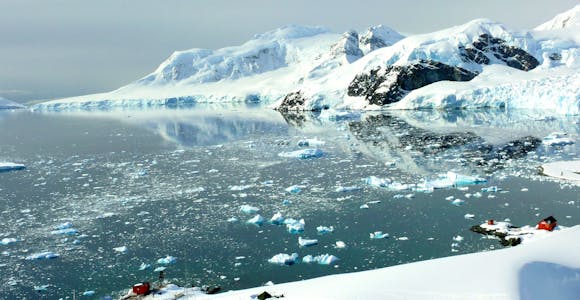
Antarctic Peninsula Cruises
The Peninsula is the classic way to experience Antarctica. Some of the best wildlife and most dramatic scenery can be found in this part of the Frozen Continent.
Discover MorePrice Match Promise-We’ll match any price you find elsewhere for the same trip

The dream of following in the footsteps of Shackleton, Scott and Amundsen is a powerful one for those travellers whose imaginations are drawn to the ice by stories of the early explorers. Standing where they stood is an unbeatable way of connecting with Antarctica's frozen history.

Shackleton's Hut at Cape Royds in the Ross Sea

Grytviken, site of Shackleton's grave

The historic 'Station E' on Stonington Island

The wreck of the ship Governoren on the Antarctic Peninsula

Traces of the old whaling industry on Deception Island

Inside the museum at Port Lockroy

Completing the Shackleton Walk on South Georgia

Shackleton's bust in the South Georgia Museum

The 'Penguin Post Office' at the historic base at Port Lockroy
The names of the places visited on the Antarctic Peninsula are replete with the echoes of the earliest days of polar exploration.
Many cruise ships sail through the Gerlache Strait, named for the Gerlache expedition that sailed in 1897, kickstarting the Heroic Era of Antarctic exploration. When the ship was caught in the ice its crew became the first people to spend the winter in Antarctica, but there’s no such fear for modern visitors, who can delight in the numbers of humpback whales who congregate here instead.
One of the most places highest on many Antarctic wishlists bears a different pedigree. Port Lockroy dates from 1944 when a British base was founded here as part of the wartime polar intrigues of Operation Tabarin. It is still run today as living museum, drawing visitors to its ‘penguin post office’.Other historic research bases include those on Damoy and Stonington Islands.
North of the Peninsula, many cruise ships call in, Deception Island, formed from the crater of a long-collapsed volcano. The weather-beaten remains of Antarctica’s only land whaling station are an eerie reminder of a bloody history, while its calm bay was the launching point for the continent’s first flight by the Australian aviator George Hubert Wilkins in 1928. Its waters today are a popular location for tourists making their polar plunge.

By Shackleton's grave at Grytviken in South Georgia
No figure towers over Antarctic exploration like that of Sir Ernest Shackleton, and no destination has more places associated with him that it's possible to visit like the sub-Antarctic island of South Georgia.
It was from here that Shackleton set out on his fated Endurance expedition in 1914, and here that he returned to after the miraculous voyage of the James Caird to get help for his stranded shipmates on Elephant Island.
Today, if South Georgia's wild weather allows, it's possible to follow the Shackleton Walk that retraces the final part of his desperate march across the island to raise the alarm, communing with history by following his footsteps and those of his companions Frank Worsley and Tom Cream by hiking to the old whaling station at Stromness Harbour.
Alternatively, visitors may discover the spirit of ‘the Boss’ by raising a toast of whisky by Shackleton's grave in the old whaling station of Grytviken, where he died in 1922. Follow up with a tour of the South Georgia Museum, which houses much Shackleton memorabilia including a replica of the James Caird itself. Thrillingly, some South Georgia cruises may also include the chance of sailing past Elephant Island. This is the ultimate voyage for any enthusiast, but difficult sea conditions make landings here incredibly rare – remember that it took even Shackleton four attempts to rescue his men here!
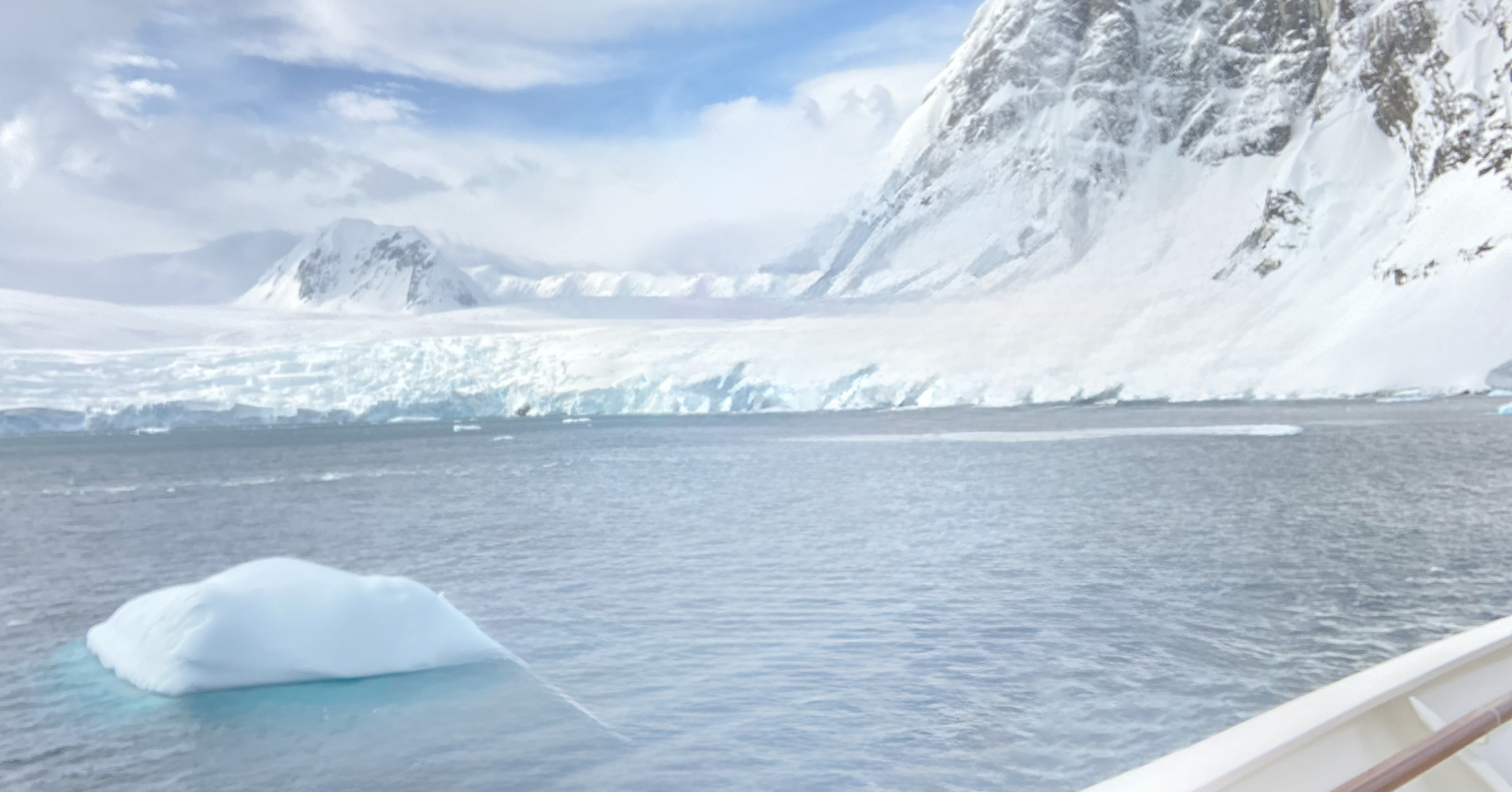
If Shackleton’s voyage in the James Caird sounds incredible when you read about it in a book, try sailing the same seas between South Georgia and Elephant Island in a modern, comfortable ship. The perspective you’ll get from being there only makes his supreme achievement seem even more incredible.
Paul Clammer Guidebook Editor
After the epic voyage of the James Caird, Shackleton and his companions hiked across the unmapped interior of South Georgia to safety. Many South Georgia cruises offer the opportunity to recreate the final leg of their trek with a 3-4 walk to Stromness Harbour.

The wreck of Shackleton's ship Endurance below the Weddell Sea
The Weddell Sea, with its great fields of tabular icebergs east of the Antarctic Peninsula, firmly landed back on many travellers’ radar in 2022 when the wreck of Shackleton’s ship Endurance was discovered 3000m beneath its surface. It was the Weddell’s pack ice that literally crushed Shackleton’s hopes of crossing the continent, and while the location of the wreck can only be reached by icebreaker, sailing here in his wake remains a powerful evocation of the Heroic Era. The wreck itself is a protected monument and cannot be disturbed in any way.
Canny polar historians know the Weddell as the place of another equally incredible story of survival – that of the Nordenskjold Expedition. The prefabricated hut from 1902 on Snow Hill island where the expedition over-wintered remains a surprisingly cosy place to visit. It stands in stark comparison to its companion on nearby Paulet Island. This simple construction of stone was built in desperation by the crew of the expedition’s relief ship when it too was caught in the ice and sank. 14 men spent the winter here living off penguins and diminishing hope before they could launch a small boat to bring relief.
Only a small number of expedition cruise ships attempt to visit this remote part of the Western Peninsula every year, but coming here offers powerful testimony about the will to survive in such extreme conditions.

Inside Shackleton's hut at Cape Royds
The Ross Sea is where Shackleton, Scott and Amundsen all based themselves in the early years of the 20th century when the starter gun was fired on the race to the South Pole. Many of their huts can still be visited today – holy grails for many Antarctic travellers.
Visiting Scott’s Hut at Cape Evans on Ross Island is perhaps the most emotionally resonant experience any history enthusiast can have in Antarctica. This is the hut built for the Terra Nova expedition in 1911 during which he and his companions perished during their return from the pole. So sensitive has been the conservation and presentation of the hut that one imagines they might still step in at any moment.
Also on Ross Island are Scott’s Discovery Hut at Hut Point and Shackleton’s Hut at Cape Adare built for the Nimrod expedition during which he attained his gruelling furthest south. It's also sometimes possible to call at Borchgrevink's Hut at Cape Adare, where the first expedition overwintered on the continent in 1899: another place of pilgrimage for the dedicated historian but also famously one of the windiest places on the continent.
Just a few ships sail to this region every year. The ice and weather in this region remains as challenging today as it did for the original explorers however, so visits to individual locations cannot be guaranteed.
10/10 - Combines great parts of the Antarctic area. History, culture, wildlife, geology were fascinating. Read the full review
Travelled: December 2022
John Metcalfe - USA
Everyone should do it to get close to Shackleton and everyone else who attempts south pole destination. We still knew where our next meal is going to come from and those guys on the ice crossing the continent did not. Read the full review
Travelled: December 2022
Manish Daulat - USA
I enjoyed learning about the history of discovery, women in Antarctica, the birds, mammals and bathymetry. The glacial lectures were very informative. Read the full review
Travelled: December 2021
Diane Walcher - USA
There were multiple high points: visiting Shackleton's gravesite at Grytviken, South Georgia; kayaking at various points around South Georgia and Antarctic Peninsula. I got to meet some really interesting people including passengers, the crew and staff. My twenty-three day trip might be too long for some people but for me it was perfect. Read the full review
Travelled: December 2018
Shane Dolan - United States Of America
The highlights for me were the whaling station at Grytviken and Shackleton's grave, and being able to hike the ridges above our landing sites. In regard to the wildlife, the vast quantity of wildlife, and how close you are to it, leaves you speechless. Read the full review
Travelled: November 2018
James Jarman - United States Of America
The highlights were the Shackleton history and being able to stand on the top of the pass where the trio looked down on the whaling base at Stromness - their destination.
Travelled: November 2017
Neill - New Zealand
I learnt a lot more about polar history than I thought I ever would thanks to Katie, the onboard historian. The wildlife experts, Dick, Jacque and Bruce are very knowledgeable and were always on hand to point out and explain about the animals sighted.
Travelled: February 2017
Chow - Singapore
Shackleton should have gone with Swoop.
Travelled: January 2017
Catherine - UK
Review:

The blue whale jawbone arch outside Stanley's Christchurch Cathedral
Visited as part of expedition cruise itineraries taking in South Georgia as well as the Antarctic Peninsula, the Falkland Islands hold much of interest for history buffs.
The tiny capital of Stanley is a popular port of call for cruise ships. It's a town packed with historic monuments and buildings – as well as its shores being dotted with shipwrecks. Its most unmissable old building is Christchurch Cathedral, the most southerly cathedral in the world with its massive arch of blue whale jawbones.
Beyond the cathedral is the excellent Historic Dockyard Museum, which tells the story of the islands in a highly engaging manner, including rooms dedicated to the 1982 War as well as the Falklands' close connections to Antarctic exploration. During a day spent in Stanley it is sometimes possible to arrange a separate tour of battlefield sites from the 1982 War.
Price Match Promise - We’ll match any price you find elsewhere for the same trip

4.7 out of 5
Travelling on board this extremely comfortable ship, explore the highlights of the peninsula with a top class expedition team. Spacious cabins, delicious cuisine and optional adventure activities all help create this ideal marriage of comfort and…
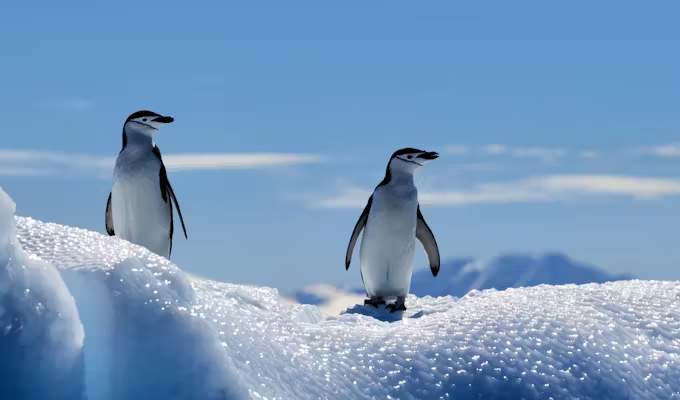
4.6 out of 5
With a good choice of departure dates through the season across three medium-sized ships, this 19-22 day trip stands out for its value for money and the broad range of cabin categories available, including Quads, which are…
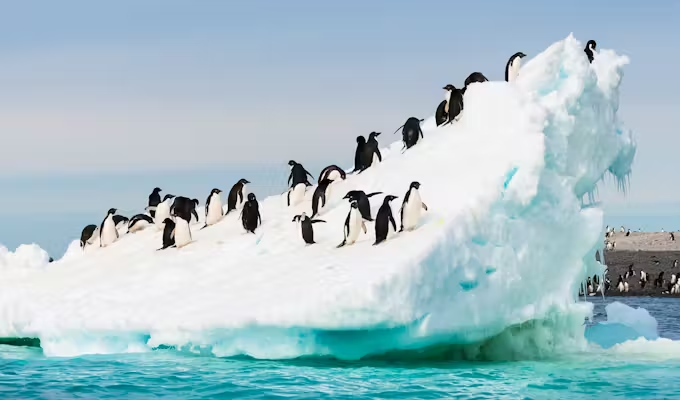
4.7 out of 5
Travel with the pioneers of fly & cruise Antarctic voyages, flying in both directions and bypassing a 2-day sail on the Drake Passage. Regular departure dates (Dec - Feb) to choose from. Explore Antarctica aboard a trusty 67 passenger expedition…
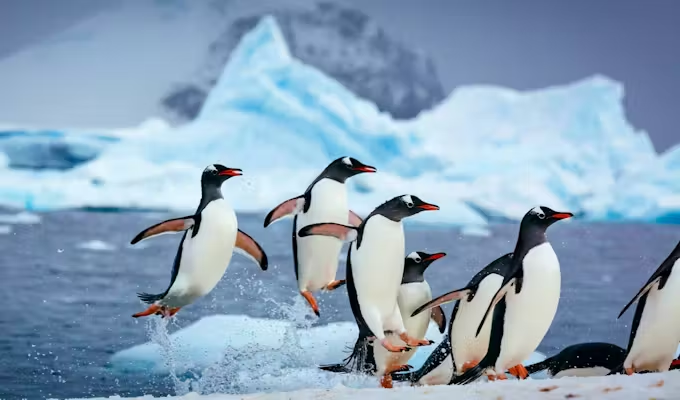
4.4 out of 5
For adventurers prioritising real comfort and ease of travel, this is a great option. Journey in style aboard a state-of-the-art expedition ship, with heli-sightseeing available on select departures for a unique bird's-eye view of Antarctica. Plus, the comprehensive transfer package…

4.6 out of 5
Explore the White Continent aboard one of the polar fleet's newest additions, a state-of-the-art expedition vessel combining adventure with comfort. As well as being limited to only 130 passengers, there’s a wide range of optional activities on this classic Antarctic…
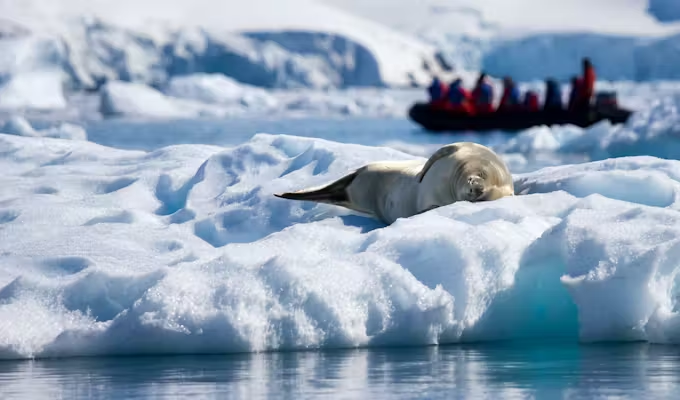
4.4 out of 5
Spend 6 full days exploring Antarctica with the Polar Circle at 66 degrees south as your most southerly objective, on board one of the most exciting new vessels. A maximum of just 130 passengers, with spacious cabins, state-of-the-art technology and…

Baby elephant seal amid a ruined whaling station on Deception Island
Antarctica is home to over 90 Historic Site and Monuments (HSMs) as registered under the terms of the Antarctic Treaty, ranging from simple cairns and graves to the impressive huts from the heroic era of exploration.
While the harsh polar environment has inevitably made its own mark on these sites, many are cared for by national heritage bodies such as the UK Antarctic Heritage Trust (such as Port Lockroy) or the New Zealand Heritage Trust (such as the Terra Nova and Nimrod huts).
Each historic site has a carefully designed management plan to protect, with strict rules in place to govern visits by tourists, including caps on numbers during a landing. During any visit, it is essential to adhere to the rules as laid out by the ship’s expedition leader. Only by doing this can we help keep these precious sites safe for future generations.
Sites in South Georgia are subject to their own management plan laid out by the Government of South Georgia & the South Sandwich Islands.
Please note that visits to specific historic can never be guaranteed. Plans can change as fast as the polar weather: decisions on which locations to visit are always made on the day by the ship's captain and expedition leader.
If it's the race to the South Pole that excites you most, the Ross Sea will be at the top of your list, because of the well-preserved historic huts there that were once occupied by the men of Scott and Shackleton's expeditions there. Alternatively, head for South Georgia for its plethora of locations associated with Sir Ernest Shackleton, including a chance to recreate part of his walk across the island, see a replica of the James Caird in the South Georgia Museum and make a graveside toast to him in Grytviken.
There are a surprising number of historic sites dotted around the Antarctic Peninsula and visiting them is a great way of understanding the richness of polar history. Your guides will you to a host of places associated with epic stories of exploration that lie under the headlines. De Gerlache, Nordenskjold, Charcot, Bransfield plus a host of anonymous sealers and whalers all left their marks to be discovered here.
The wreck of the Endurance was discovered in March 2022, exactly 100 years to the day after Shackleton's funeral. It lies 3000 metres below the ice of the Weddell Sea, making it impossible to visit in person, although our Weddell Sea cruises can give you a taste of the scenery the Endurance crew encountered on their voyage of survival.
Can you guarantee visits to specific historic locations? Mother Nature calls the shots in Antarctica, and as such visiting any specific location is subject to weather and ice conditions. However, both your ship's captain and expedition leader well understand the talismanic nature of certain locations and will do their best to attempt landings if conditions allow. In South Georgia, all cruise ships must call at Grytviken for immigration and biosecurity checks, so if you trip includes the island you'll almost certainly get to visit Shackleton's grave and raise a toast to 'the Boss' there.
Absolutely. Most cruises start and finish in Ushuaia, whose Museo Marítimo (a converted prison) has an excellent wing dedicated to the exploration of Antarctica, including a fine collection of model ships from every major expedition.
If you fly to Antarctica from Punta Arenas, that city has its own walking trail of historic buildings and monuments associated with Antarctica, along with the Museo Nao Victoria with its recreations of historic exploration ships. It's a must to visit the waterfront to see the preserved prow of the Yelcho, the Chilean ship that rescued the crew of Endurance in 1916, along with the statue of its captain, Luis Pardo.

The Peninsula is the classic way to experience Antarctica. Some of the best wildlife and most dramatic scenery can be found in this part of the Frozen Continent.
Discover More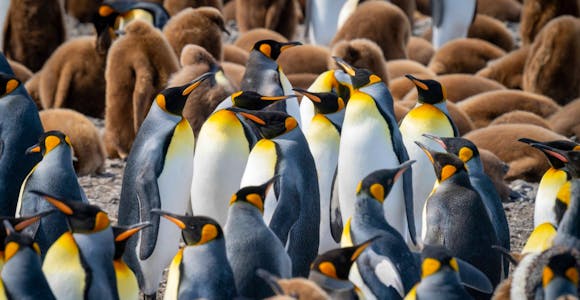
A jewel in Antarctica's crown, South Georgia is one of the world's great wildlife destinations: the Serengeti of the Southern Ocean
Discover More
The Ross Sea is remote, hauntingly beautiful and full of Antarctic history. A unique polar gem, it welcomes only a lucky few to its frozen shorelines every year.
Discover More
The Weddell Sea is Antarctica at its most untamed. Accessible for only a few months of the year, it’s home to immense tabular icebergs and remote emperor penguin colonies.
Discover MoreWe'll spend some time listening to your aspirations, then discuss the kind of experience that might suit you.
Next we'll discuss the options, shortlist the best trips for you and present you our impartial recommendations.
We'll place a 24 hour hold on your preferred option - without obligation - whilst we talk through the details.
With over 100 years of Antarctic experience between us, we can help guide you to exactly the right trip for you.
1 888 970 4570This website uses cookies to ensure you get the best experience on our website. Privacy policy
We don’t charge a commission and there are no hidden fees. Just impartial, expert advice from the leading Polar cruise agent. Schedule a call with our Antarctic Experts today.